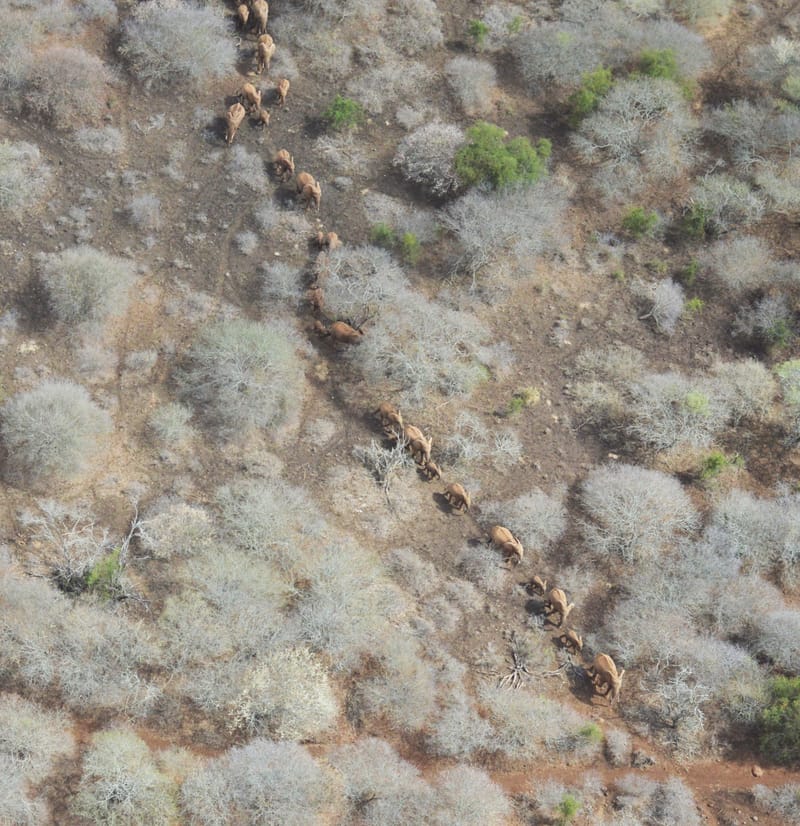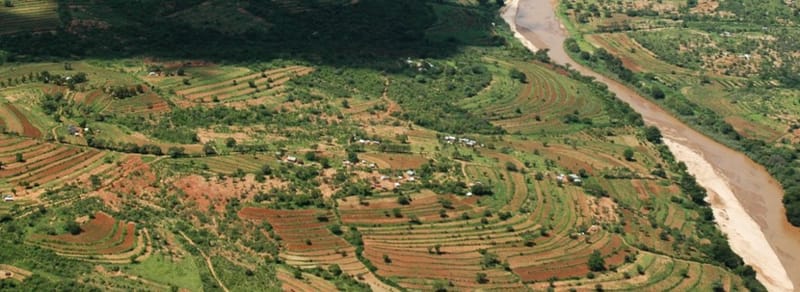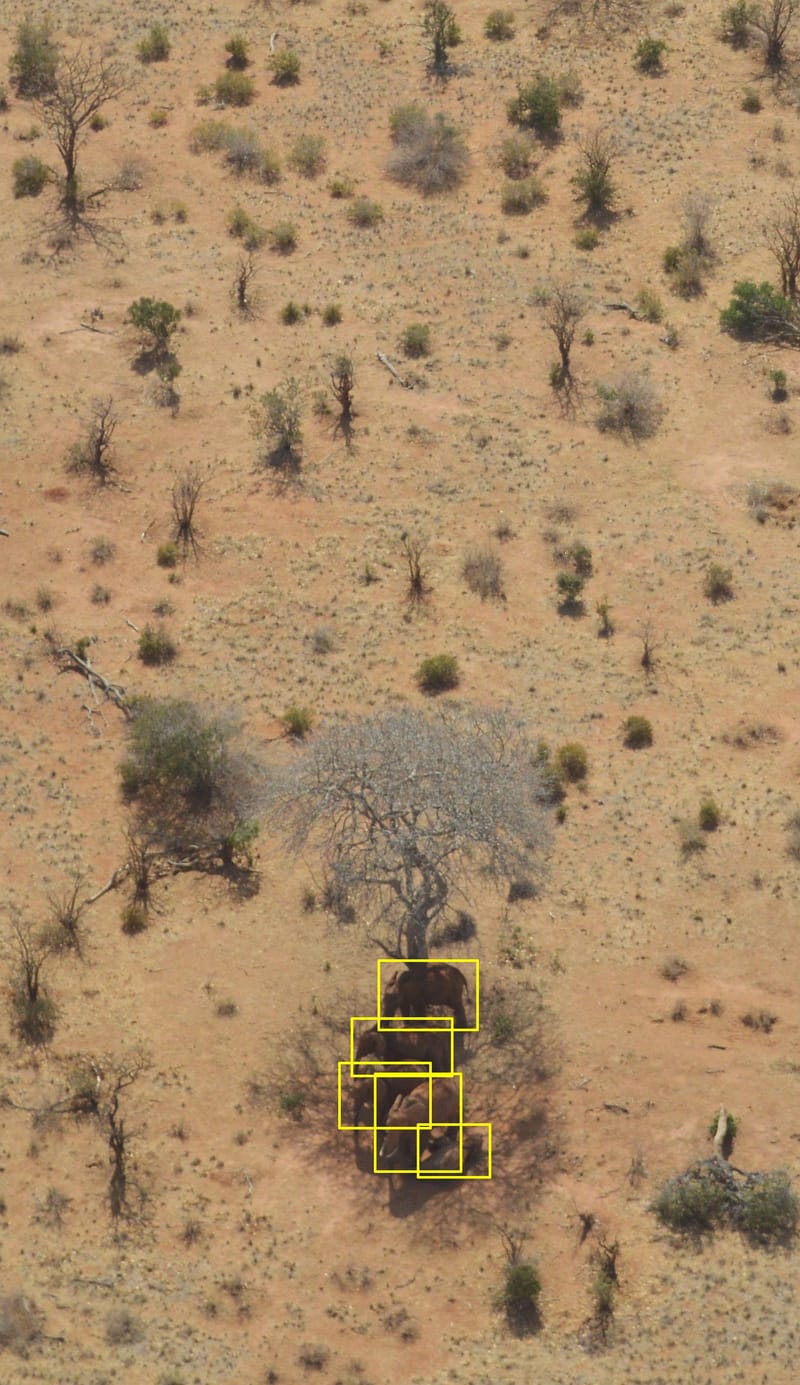WildSpace Image Analytics
Interpretative solutions in aerial imaging for wildlife survey, land use and machine learning
Services

WILDLIFE AND LIVESTOCK POPULATIONS AND DISTRIBUTIONS
We specialize in gathering, indexing and interpreting large volumes of high-resolution aerial images (12 - 36 MegaPixel) for African wildlife, vegetation and human variables. We compile the geo-referenced information into comprehensive Excel meta-databases for population analysis (for example "Jolly II") and for deployment to clients for their own needs.
Learn More
LAND USE ASSESSMENT AND AGRICULTURAL INVENTORY
We implement surveys using aerial-point-sampling (APS) methods to assess land use and crop systems, and implement agricultural inventories. Using high-resolution digital cameras, we map crop types at a resolution of 3 cm ground-sampling-distance (GSD) to derive land budgets at the scale of districts and regions.
Learn More
ANNOTATION FOR MACHINE LEARNING
With our vast experience in bulk interpretation of imagery for wildlife and landuse, we are now pleased to offer services at cost-effective prices for bulk annotation of aerial imagery for object detection and machine learning.
Learn MoreAbout


WildSpace Image Analytics (WIA) was launched in its early form in 2005 by Dr Richard Lamprey, a wildlife survey and remote sensing specialist based in East Africa, who has taken forward the use of small and medium format camera imaging for wildlife enumeration and land use assessment. Over the last 15 years, we have been developing new techniques for survey using small-format digital cameras, and building up a dedicated Ugandan team of image interpreters who analyse the images. The WIA Team geo-reference, interpret and quantify a large range of variables including wildlife species, vegetation communities, crop types and human settlement. We compile the information into Excel meta-databases for analysis and for deployment to clients for their own needs.
As the only team in Africa dedicated to image-based wildlife estimation, we have a formidable experience in all aspects of aerial wildlife surveys using camera systems, especially in regard to integrating these techniques into the systematic reconnaissance flight (SRF) method and 'Jolly II' analysis for population estimation. We conduct the entire survey using digital camera systems, and interpret the acquired images in the laboratory. This involves visually scanning through thousands of images for the presence of animals, and detecting the 'True Positives' out of the many 'True Negatives'. Every animal detection is verified in the photographic record for future validation.
We offer a turn-key capability for wildlife census and crop monitoring based on the new 'camera-count' techniques we have developed, and which are now published in the peer-reviewed academic journals. Our published experiments reveal that 'traditional' aerial multi-species wildlife counts conducted over the last 60 years using human 'rear-seat-observers' (RSOs) may fail to detect many animals. For example, in Tsavo National Park in Kenya in 2017, the observers missed over 50% of the large mammals detected in the parallel imagery. Our camera-counts have therefore significantly increased wildlife population estimates, an example being Uganda where our surveys have boosted the national elephant population estimate by 70% in comparison with recent RSO-based estimates. This is surely an optimistic note in these troubled times for wildlife conservation.
Our counting techniques logically lead into image annotation for machine learning, and we are now pleased to offer bulk annotation services for automated object detection in the fields of wildlife census and crop systems.
To date, the team have acquired and interpreted over 500,000 images, and we are privileged to have served the following clients:
2020, KENYA; Ol Pejeta Conservancy (500 sq.km), trial of high-resolution stills, 4K videography cameras and thermal infra-red (TIR) cameras for improving wildlife counts, for Save the Elephants, Nairobi - the elephant conservation organization of Dr Iain Douglas-Hamilton. This was a systematic reconnaissance flight (SRF) design, acquiring 9000 images and 8 hours of simultaneous TIR and 4K Videography for analysis.
2019, UGANDA; Murchison Falls National Park (5000 sq.km), using high-resolution cameras, for Uganda Wildlife Authority, Uganda Conservation Foundation, Global Conservation, Vulcan Inc. A systematic reconnaissance flight (SRF) wildlife survey, acquiring 48,000 'oblique-camera-count' (OCC) images for analysis.
2019, SOMALIA; Livestock Survey Design Expert (Aerial and Ground Components), for the 2019-21 Somalia National Livestock Survey, for Food and Agriculture Organization (FAO) of the United Nations. The design employs advanced aerial imaging techniques developed by the WIA Team, combined with ground-based surveys of pastoral households. The design was endorsed by FAO's Statistical Section in Rome in May 2019.
2018, UGANDA; Queen Elizabeth National Park (3000 sq.km) using high-resolution cameras, for Uganda Wildlife Authority, Uganda Conservation Foundation, Global Conservation, Vulcan Inc. and Save the Elephants. An SRF wildlife survey, acquiring 32,000 OCC images for analysis.
2017, KENYA: Tsavo National Park (34,000 sq.km), using high-resolution camera systems and rear-seat-observers (RSOs), for Save the Elephants and Kenya Wildlife Service. An SRF design, acquiring 160,000 images for analysis. The experimental survey showed that RSOs miss over 50% of the animals detected in the imagery, and concludes that the future of animal census lies with image-based counting techniques coupled with machine learning. See article:
Lamprey, R. H., Pope F., Ngene S., Norton-Griffiths M., Frederick H., Okita-Ouma B., and Douglas-Hamilton, I. (2019) Comparing an automated high-definition oblique camera system to rear-seat-observers in a wildlife survey in Tsavo, Kenya: Taking multi-species aerial counts to the next level. Biological Conservation 2019; doi:10.1016/j.biocon.2019.108243
2015/16, UGANDA; Four aerial wildlife surveys, Murchison Falls NP (5000 sq.km), using high-resolution cameras, for Total E&P, Uganda Wildlife Authority and Fauna & Flora International. This survey acquired 96,000 images for analysis, leading to the development of the oblique-camera-count (OCC) method of wildlife surveys. See article:
Lamprey, R. H., Ochanda D., Brett R., Tumwesigye C., Douglas-Hamilton I. (2020) Cameras replace human observers in multi-species aerial counts in Murchison Falls, Uganda. Remote Sensing in Ecology and Conservation 2020; doi:10.1002/rse2.154
2016/17; Dr Richard Lamprey was the Principal Reviewer for aerial surveys in Kenya, Uganda, Tanzania and Angola carried out by the Pan-African Elephant Aerial Survey programme, Vulcan Inc. (the philanthropy and technology innovation agency of Paul G. Allen of Microsoft)
Contact
- Mwitu, Karen, Nairobi, KENYA & Block 250, Bunga, Kampala, UGANDA
- P.O. Box 21472-00505, Nairobi, Kenya
- +79258213646
- info@wildspace-image-analytics.com
- 08:00 - 19:00 Monday-Friday


